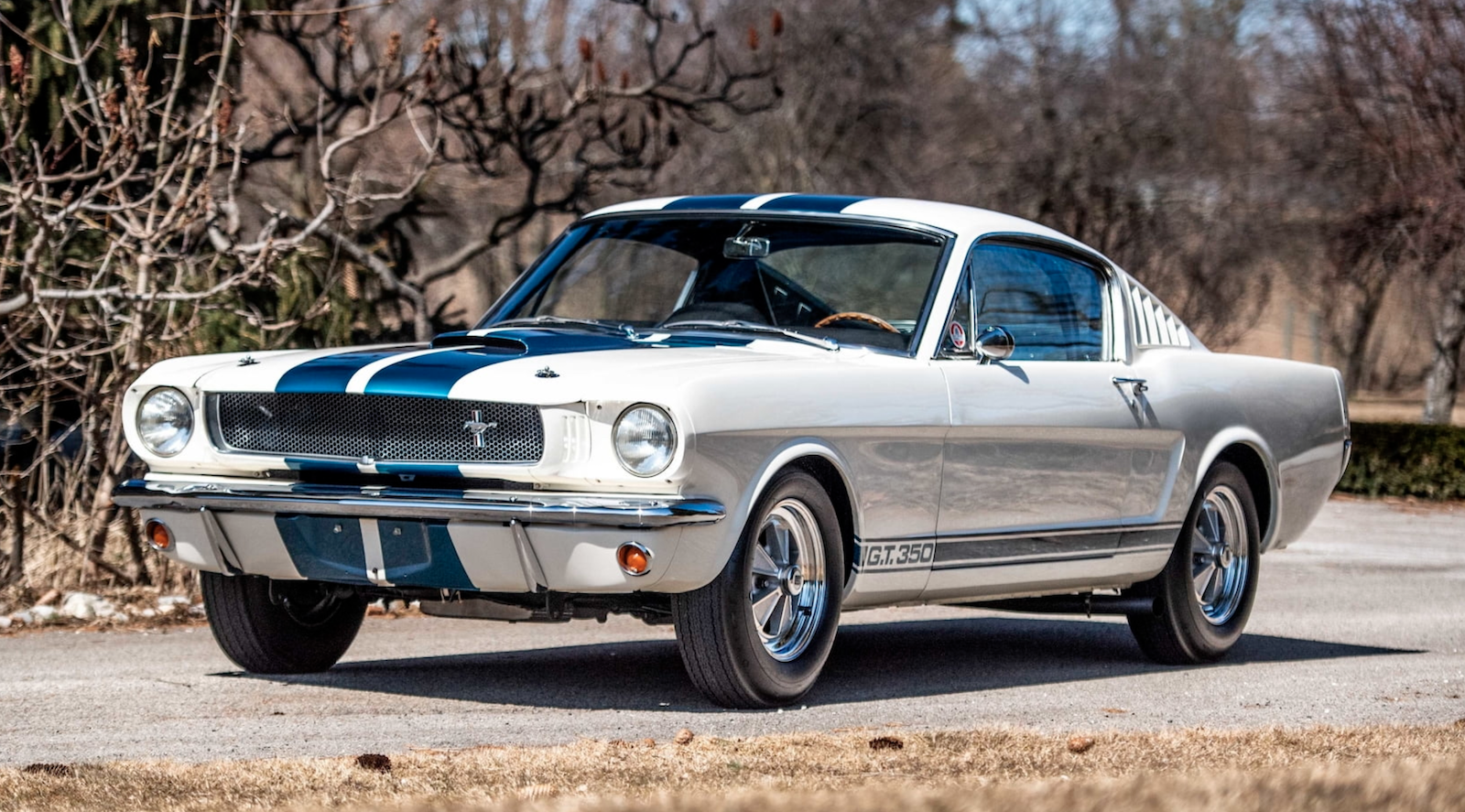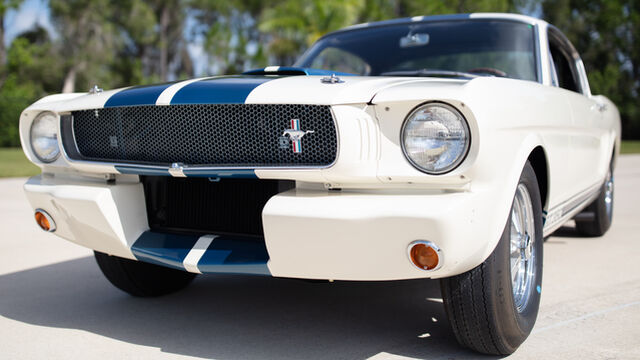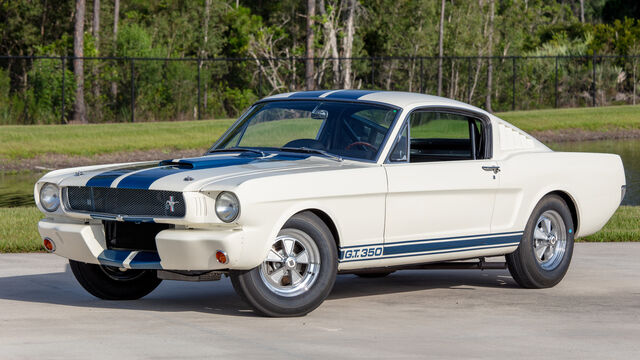Few could have predicted how robust the Ford Mustang’s early sales figures would be, upon its release in 1964. A total of 22,000 Mustangs were sold during the vehicle’s first day on the market, with over 100,000 driven home by consumers within the iconic line’s initial half-year of production.
As phenomenal as these sales figures were, top Ford execs were still on edge. The consensus within the auto manufacturer’s upper-management tier was that sales were sure to stagnate in the years to come. As a result, talks began to center around what needed to be done to keep the Mustang relevant, then, and well into the future.
Perfect Timing
As Ford brass mulled over how best to proceed, legendary automotive visionary and racer, Carrol Shelby, already had the answer in his hip pocket. As it seems, he was just waiting for someone to pose the right question. Those at Ford were quite keen on Shelby’s efforts toward the infamous Cobra racer and felt that his input would provide them with the infusion of power that they envisioned for the Mustang.
Ford’s Lee Iacocca approached Shelby, posing his quandary in the process. With little in the way of hesitation, Shelby agreed to produce the auto manufacturer’s latest iteration of the Mustang, built purely to outperform the competition. However, this would not be a simple undertaking to manage, as the new high-output Mustang was to be fast-tracked, in order to meet the SCCA’s (Sports Car Club of America) B Production class standards for the 1965 model year.
To adhere to this timeline, Ford shipped 110 K-Code DSO Fastback Mustangs to Shelby America’s Los Angeles facility. All such cars were delivered without hoods, grilles, rear seats, exhaust systems, or emblems. With a facility full of newly delivered Mustangs, and a mass shipment of parts from Ford, Shelby, and his team got down to the business of creating what would ultimately become the 1965 Shelby GT350.
A Production-Class Racer
Carrol Shelby and his team would indeed make their deadline, having 100 roadworthy 1965 Shelby GT350 Mustangs ready for SCCA inspection by January. Each of these cars was Wimbledon White with Guardsman Blue stripes and featured fiberglass hoods, as well as Shelby badging. Other notable exterior features included a hood-mounted air scoop, open grille, distinctive fiberglass front apron, GT350 rocker panel striping, and enlarged fender flares to accommodate the car’s Goodyear Blue Dot tires, which were mounted on 15 x 7 inch wheels.
Shelby also made several modifications to the stock Mustang’s interior. Some of the most notable included the installation of a 4-point roll cage, and a new instrument cluster, complete with a revised tachometer. The Mustang’s rear seating was also deleted, and new fiberglass side/rear windows were installed within aluminum frames. Outside of these modifications, the GT350 retained the Mustang’s stock all-black interior, including split, low-back bucket seats, and a wood-rimmed steering wheel with three chrome spokes.
In order to comply with the SCCA’s Production-Class standards, either a vehicle’s powertrain or suspension could be modified, but not both. Shelby decided to retain the Mustang’s stock suspension, in favor of being able to modify its engine to his liking. However, Shelby did reposition the GT350’s front suspension mounting points, while also lowering the car’s A-arms. As a result, a drop in ride height of 1” was achieved.
The GT350 also featured semi-elliptical leaf springs and stronger torque reaction arms, atop its live rear axle. Adjustable Koni shocks and more robust anti-roll bars were also installed around the car, as were larger brakes, oil coolers for the differential, and a quick-ratio steering rack.
The Shelby GT350’s most significant improvements took place under the hood, where an eager Shelby heavily modified the stock Mustang’s Hi-Po 289 cubic-inch V-8, which already produced a respectable 271 HP. Each GT350’s engine was stripped of its stock cast-iron intake, in favor of a Cobra Hi-Rise manifold. A Holley four-barrel 715-cfm carburetor was then installed, as were lightweight tubular Tri-Y exhaust headers. A much larger radiator was borrowed from the Ford Galaxy 500, and placed into the GT350, to keep overheating at bay.
In its refined form, the GT350’s powerplant was capable of producing 306 horsepower at 6,000 rpm, propelling the Mustang to top speeds of 138 mph and a 0-to-60 mph time of 6.6 seconds. This power was directed downstream by a Borg-Warner T-10 four-speed gearbox.
In total, 521 production model Shelby GT350 Mustangs were built prior to August of 1965, when manufacturing efforts for the 1966 GT350 began.
1965 Shelby Mustang Specifications
| MSRP (Street Version) | $4,547 |
| MSRP (Race Version) | $5,995 |
| Engine | 289 cubic-inch V8 (High-Performance Edition) |
| Valvetrain | Pushrod OHV, 2 Valves per Cyl |
| Block Material | Cast Iron |
| Fuel System | Holley 4-Barrel Carburetor |
| Horsepower | 306 HP @ 6,000 RPM |
| Torque | 329 ft.lb @ 4,200 rpm |
| Transmission | 4-Speed Manual |
| Body & Frame | Unitary Steel Monocoque w/Fiberglass Hood |
| Suspension | Live Axle w/Leaf Springs |
| Front Wheels | 38.1 x 17.8 cm / 15 x 7 in |
| Rear Wheels | 38.1 x 17.8 cm / 15 x 7 in |
1965 Shelby Mustang Production Numbers
| Street prototype | 1 |
| Street production models | 504 |
| Competition prototypes | 2 |
| Competition models (R) | 34 |
| Drag cars | 4 |
| Other prototypes | 17 |
| Total | 562 |
Available Exterior Colors
All 1965 Shelby Mustang were painted Wimbledon White, code M. All 1965 Shelby Mustang interiors were black.
1965 Shelby Mustang Videos
We found a great video documentary about the ’65 Shelby which we have embedded below. In finding that we also were able to locate some other cool videos which we added in subsequent posts. See more 1965 Shelby Mustang Videos here.
1965 Shelby Mustang Pictures
See full 1965 Shelby Mustang Photo Gallery






